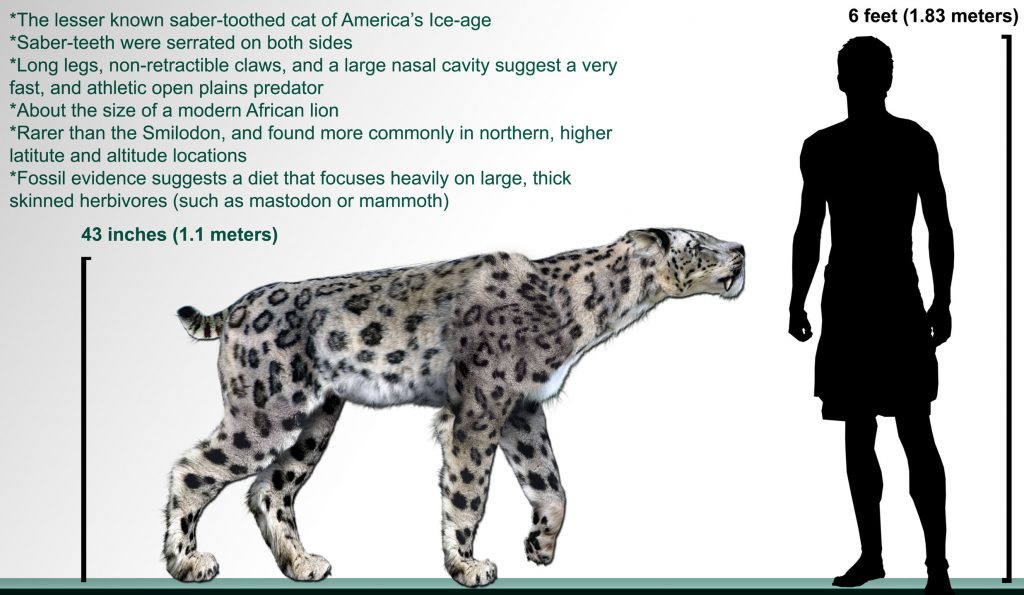
All sorts of strange giant predators roamed the Earth thousands of years ago during the Ice Age. But new research is changing what scientists thought they knew about one of those animals — a giant saber-toothed cat with long, serrated steak-knife teeth that may have existed alongside early modern humans.
Homotherium — or the scimitar cat, as this massive predator is commonly called — once prowled across the Americas and Europe.

In Europe, they appeared to have died out around 300,000 years ago, while North American scimitar cats (which were considered a separate species) were still alive as recently as 11,000 years ago.
Now, a new study suggests the cats were alive in Europe much longer than previously thought, and both species may be more closely related than scientists suspected.
A team of researchers compared mitochondrial DNA from a rare jaw bone fossil found in the North Sea dated to 28,000 years ago with fossils of two other Homotherium from Yukon, Canada and another saber-toothed cat called the Smilodon populator.

They found that the European scimitar cat from the North Sea was strikingly similar to the ones discovered in North America. So similar, in fact, that they’re probably all one species.
However, there were significant differences between those three and the Smilodon fossil. Although Smilodon and Homotherium shared a common ancestor with all living cats, they diverged from each other about 18 million years ago, researchers say.
Given the new information about when Homotherium was alive, it’s now likely that they went extinct the same way as other animals like the woolly mammoth that lived during their time — competition from modern humans.
WATCH NEXT: Lions Once Roamed America




